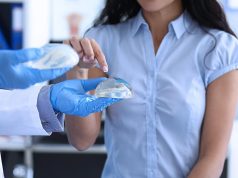Surveillance with the technology may allow earlier detection, more effective treatment for lymphedema
MONDAY, May 13, 2019 (HealthDay News) — Use of an electrical current to measure extracellular fluid volume — bioimpedance spectroscopy (BIS) — may identify postoperative breast cancer patients at risk for lymphedema at an earlier stage, when intervention may more effectively prevent progression, according to an interim analysis of data from a study presented at the annual meeting of the American Society of Breast Surgeons, held from April 30 to May 5 in Dallas.
Sheila Ridner, R.N., Ph.D., from the Vanderbilt University School of Nursing in Nashville, Tennessee, and colleagues enrolled patients prior to cancer treatment who were undergoing one or all of the following: mastectomy, a range of lymph node-related breast cancer surgeries, or radiation. For detection of early lymphatic impairment, 508 patients (median age, 58.8 years) were randomly assigned to surveillance with either BIS or conventional tape measure (TM) assessment and were followed for a median of 17.8 months after surgery.
The researchers found that among the patients, 21.9 percent triggered prethreshold interventions (68 patients in the TM group and 41 patients in the BIS group). BIS had a lower rate of trigger (15.8 percent versus 28.5 percent for TM; P < 0.001) and longer times to trigger (9.5 months versus 2.8 months for TM; P = 0.002). Progression to complex decongestive physical therapy was seen among 12 triggering patients, including 10 in the TM group and two in the BIS group. BIS, therefore, yielded a 67 percent relative reduction and a 9.8 percent absolute reduction (P = 0.130).
“These findings mean that women could potentially avoid this debilitating condition if BIS screening were the norm,” Ridner said in a statement. “I believe that this is a scientifically robust study. I expect that we will achieve similar results throughout the rest of the study and hope someday every breast cancer patient at risk will have access to this valuable tool.”
Copyright © 2019 HealthDay. All rights reserved.








